- | 9:30 am
A $750 million attempt to reinvent the hospital
With three new hospitals designed by Renzo Piano being built in Greece, there is hope of bringing humanity back to the country’s healthcare system.
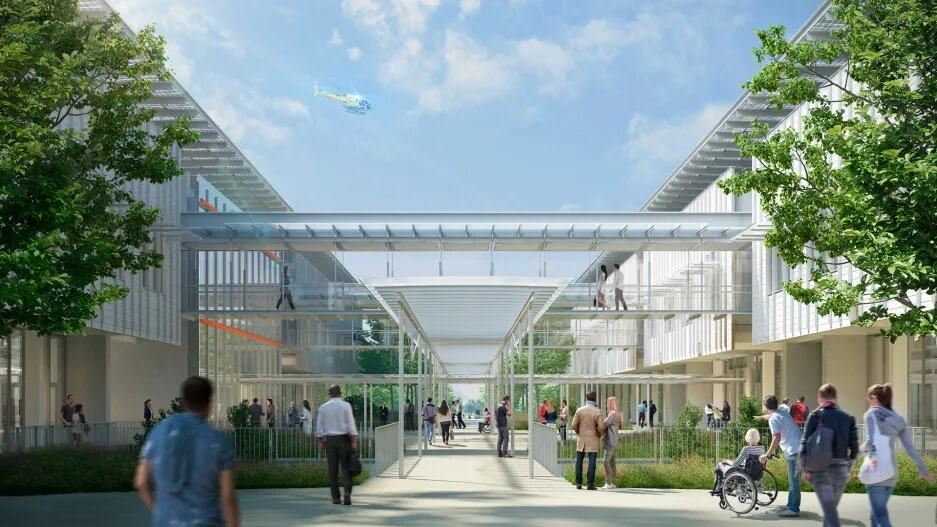
When the need arises for specialized healthcare, like a complicated brain surgery or pediatric cancer treatment, the only option for most people living in Greece is to go to Athens. Healthcare infrastructure in the country’s smaller cities and rural areas can handle only so much.
A new $750 million effort is underway to reinvent healthcare in Greece by building state-of-the-art hospitals in places other than the capital.
“There is a need in Greece to improve access and quality of care in regions that are underserved,” says Elianna Konialis, who leads the Stavros Niarchos Foundation (SNF) Health Initiative, which is fully funding the effort.
Greece’s economic collapse in the mid-2000s put its already creaky healthcare system on life support, with many hospitals unable to upgrade systems. The pandemic has heightened those disparities.
Leading the design is Pritzker Prize-winning architect Renzo Piano, known for codesigning the Centre Pompidou in Paris. The foundation expects to cut the ribbons on three brand-new hospitals by 2025. They’ll be located in the cities of Komotini and Thessaloniki in northern Greece and Sparta in the south.
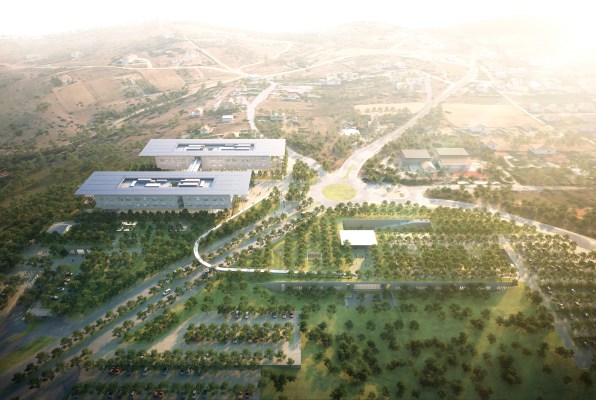
The facilities are similar in shape and design, with long rectangular buildings topped with overhanging arrays of photovoltaic panels. Sitting parallel or in a single line, these buildings provide the main clinical spaces, with other labs and technical spaces tucked into floors that blend into the surrounding hillsides.The largest of the three hospitals—a dedicated children’s facility that’s just the second in the country—will be in Thessaloniki.
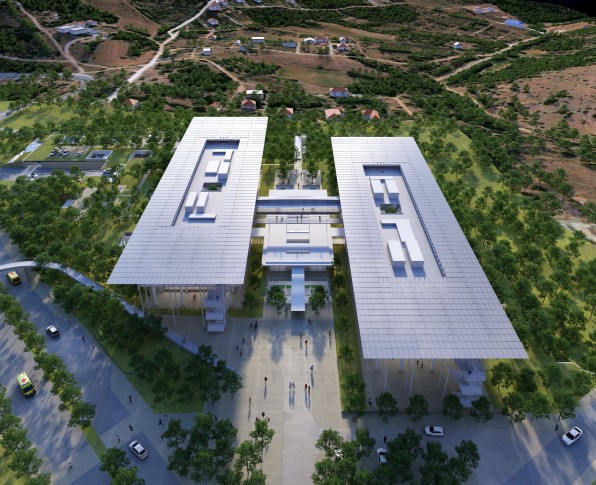
Designed with a flexible and modular floor plan, the hospitals are intended to be able to survive with the changing technologies and demands of modern healthcare, moving walls to create larger clinical spaces or pull in updated equipment. They also include spaces like healing gardens, upper-floor patios, and recreation areas—suggestions that SNF staff heard directly from residents in the cities where the hospitals are being built.“This might seem a secondary consideration, but we’ve been getting a lot of ideas from the local communities on the importance of introducing art to the hospitals, or areas for play for children, or areas for families to rest or be outdoors,” Konialis says. “I think this also speaks to a more holistic approach to public health.”
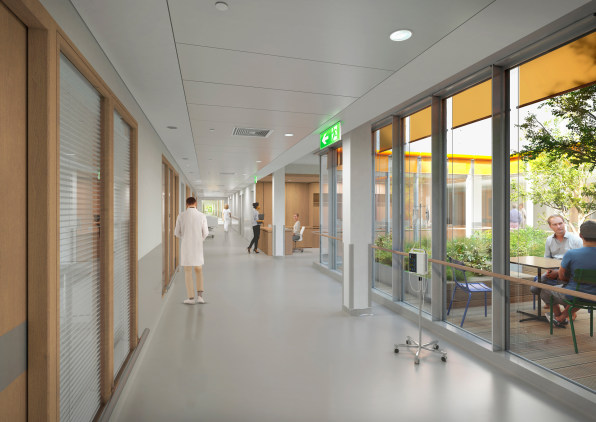
They’re also integrated with the landscape around their sites. Hundreds of trees are being planted to create lush views and green oases instead of an asphalt ring of car parking.
Mark Carroll, partner at Renzo Piano Building Workshop, says the landscape has been designed to optimize views of the trees for patients in hospital rooms. “You look out the window and you see the sky or the tree canopy,” he says.
Natural light was also prioritized in the design, and not just in patients’ rooms. Carroll says windows will bring natural light into intensive care units and operating rooms. “Operations last several hours, and we think it’s appropriate that the doctors and nurses working in the theater should have natural light,” he notes.
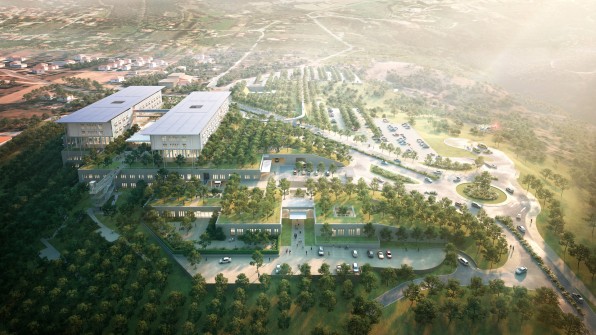
There is also an emphasis on setting a new environmental standard with the project. In addition to pursuing the LEED green building standard’s Platinum rating and being 100% electric powered (with the rooftop solar panels or geothermal wells generating power on-site), most of the hospitals’ structure and facades are made of timber. They’ve even been designed to be what Carroll calls “zero carbon ready,” or able to operate without any CO2-producing power sources when Greece’s grid makes that transition.
It’s a notable goal. “Hospitals are gas guzzlers,” Carroll says. “You can’t turn a hospital off. It’s 24 hours a day, 365 days a year. It’s always working.”
Despite the project’s sustainability aspirations, both the foundation and the architects emphasize that it’s really about making healthcare more accessible to people in Greece. “The big idea is bringing a sense of humanity back to caring for people,” Carroll says, arguing that the hospitals’ design has relevance beyond Greece. He points to elements like better natural light, spaces for patients’ families, and more humane working environments for healthcare providers.
“They’re three templates for a modern hospital,” Carroll says. “The thinking [is that it’s] a modern hospital for Greece, but in the end it’s a modern hospital for Europe or the world.”
Panos Papoulia, COO at the Stavros Niarchos Foundation, agrees. “Our hope would be that this will act as an impetus for more people to join this effort and pursue [similar] projects.”





































